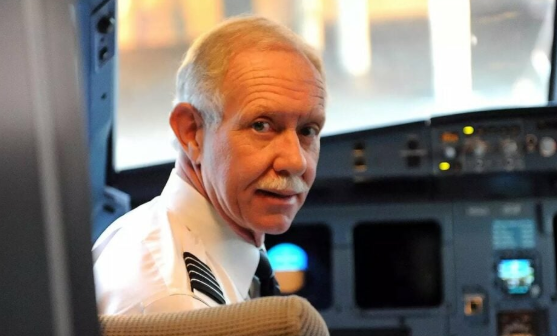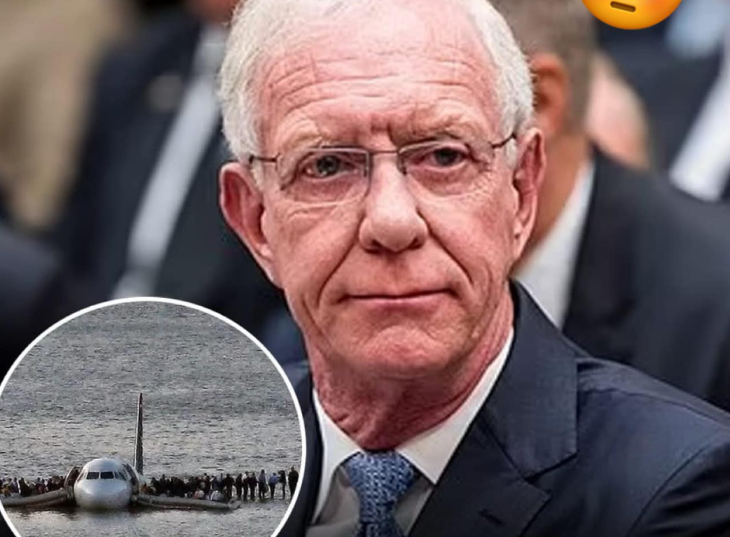I nearly dropped my phone when I saw the headline: Hero pilot Captain Sully shares terrifying theory on why DC plane crash happened. If there’s anyone whose opinion I trust about aviation disasters, it’s Chesley “Sully” Sullenberger—the man who famously landed a passenger jet on the Hudson River in 2009, saving all 155 lives onboard. This time, Sully’s concerns focus on nighttime flights over water, which he believes may have played a tragic role in the recent collision near Washington, D.C.
Night Flight Complications

According to Sully, the crash that claimed 67 lives might have been partly caused by poor visibility during a nighttime flight over a dark body of water. He explained that fewer ground lights reflecting off the water at night can make it significantly harder to spot other aircraft. As he stated, “All you can see are the lights on them,” which makes determining relative altitude and distance extremely challenging. While some might question whether air traffic controllers should have intervened, Sully pointed out that if pilots confirm visual contact with each other, controllers can temporarily hand over separation responsibilities to them. Tragically, something went terribly wrong in this case.
Sully also appeared on Good Morning America, where he reiterated that at least one pilot had visual contact but still failed to maintain the required distance for a safe flight path. When these last lines of defense fail, it’s like “dominoes lined up the wrong way,” as Sully described it. With nighttime flights, even a small lapse can lead to catastrophe. The fact that Hero pilot Captain Sully shares terrifying theory on why DC plane crash happened should prompt every airline and pilot to re-examine their protocols—especially around busy airports like Reagan National, known for its short runways and heavy air traffic.
Runway Pressures and Staffing Challenges
One critical issue emerging from the incident is the staffing situation in the control tower at Reagan National Airport. Reports suggest that the controller responsible for guiding helicopters near DCA was also managing departures and arrivals for other aircraft. Sully emphasized that because D.C.’s airport is located close to other airfields and has such short runways, pilots require specialized training to operate there safely. Combine these complexities with chronic understaffing, and it’s easy to see how the conditions for a midair collision could arise.
Hero Pilot Captain Sully Shares Terrifying Theory on Why DC Plane Crash Happened… and Why It Must Be Addressed

Investigators have recovered the black boxes from the submerged wreckage in the Potomac River, offering hope that the final moments before the crash can be reconstructed. A preliminary report already indicates that the tower was overstretched, with the same controller communicating with both helicopter and plane pilots. Sully’s warning highlights how nighttime flights, water reflections, and potential staffing shortages may have combined to create a perfect storm. Whenever I think about how Hero pilot Captain Sully shares terrifying theory on why DC plane crash happened, I can’t help but feel that if even he’s concerned about these conditions, we should all be paying attention.
Lessons from the Miracle on the Hudson
Sully’s experience is practically legendary by now. When his plane lost both engines after a bird strike in 2009, he executed a safe water landing on the Hudson River, miraculously saving everyone onboard. Since then, he has been a vocal advocate for safety reforms, improved pilot training, and thorough incident investigations. If the aviation industry heeds his warnings about the recent D.C. crash, future disasters might be prevented. But as Sully himself puts it, “Any lapse could potentially be fatal, even though we have a lot of safety.”
Please SHARE this article with your friends and family on Facebook to spread awareness about aviation safety and the critical insights shared by Captain Sully.






